Anthrax is one of those very 20th century, cold war-related scares that doesn’t seem to hold the same terror that it once did. Today’s weird Wikipedia article reminds us of what happened to a scottish island that was poisoned in the name of science…
Gruinard Island is a small Scottish island made uninhabitable for all mammals by experiments with the anthrax bacterium, until it was decontaminated in the late 20th century.
At its closest point to the mainland, the small, oval-shaped island is just over 1.1 kilometres (0.68 mi) offshore. The population was recorded as six in 1881, but Gruinard has been uninhabited since the 1920s.
In 1942, Gruinard was the site of a biological warfare test by British military scientists from Porton Down. At that time there was an investigation by the British government into the feasibility of an attack using anthrax: both to test the vulnerability of Britain against a German attack and the viability of attacking Germany with a British bio-weapon. Given the nature of the weapon that was being developed, it was recognised that tests would cause widespread and long-lasting contamination of the immediate area by anthrax spores. In order to limit contamination a remote and uninhabited island was required. Gruinard was surveyed, deemed suitable and requisitioned from its owners by the British Government.
The anthrax strain chosen for the Gruinard bioweapons trials was a highly virulent type called “Vollum 14578”, named after R. L. Vollum, Professor of Bacteriology at the University of Oxford, who supplied it. Eighty sheep were taken to the island and bombs filled with anthrax spores were exploded close to where selected groups were tethered. The sheep became infected with anthrax and began to die within days of exposure. Some of the experiments were recorded on 16 mm colour movie film, which was declassified in 1997. One sequence shows the detonation of an anthrax bomb fixed at the end of a tall pole supported with guy ropes. When the bomb is detonated a brownish aerosol cloud drifts away towards the target animals. A later sequence shows anthrax-infected sheep carcasses being burned in incinerators following the conclusion of the experiment.
Scientists concluded after the tests were completed that a large release of anthrax spores would thoroughly pollute German cities, rendering them uninhabitable for decades afterwards. These conclusions were supported by the discovery that initial efforts to decontaminate the island after the biological warfare trials had ended failed due to the high durability of anthrax spores.
In 1945 when the owner sought the return of Gruinard Island, the Ministry of Supply recognized that the island was contaminated as a result of the wartime experiments and consequently it could not be derequisitioned until it was deemed safe. In 1946, the Crown agreed to acquire the island and to take on the onus of responsibility. The owner or her heirs and beneficiaries would be able to repurchase the island for the sale price of £500 when it was declared “Fit for habitation by man and beast”.
For many years it was judged too hazardous and expensive to decontaminate the island sufficiently to allow public access. Gruinard Island was quarantined indefinitely as a result. Visits to the island were prohibited, except periodic checks by Porton Down personnel to determine the level of contamination.
In 1981 newspapers began receiving messages with the heading “Operation Dark Harvest” which demanded that the government decontaminate the island, and reported that a “team of microbiologists from two universities” had landed on the island with the aid of local people and collected 300 lb (140 kg) of soil. The group threatened to leave samples of the soil “at appropriate points that will ensure the rapid loss of indifference of the government and the equally rapid education of the general public”. The same day a sealed package of soil was left outside the military research facility at Porton Down; tests revealed that it contained anthrax bacilli. A few days later another sealed package of soil was left in Blackpool, where the ruling Conservative Party was holding its annual conference. The soil did not contain anthrax, but officials said that the soil was similar to that found on the island.
Starting in 1986 a determined effort was made to decontaminate the island, with 280 tonnes of formaldehyde solution diluted in seawater being sprayed over all 196 hectares of the island and the worst-contaminated topsoil around the dispersal site being removed. A flock of sheep was then placed on the island and remained healthy. On 24 April 1990, after 48 years of quarantine and 4 years after the solution being applied, junior defence minister Michael Neubert visited the island and announced its safety by removing the warning signs. On 1 May 1990, the island was repurchased by the heirs of the original owner for the original sale price of £500.
There have been no reported cases of anthrax in the island flock.

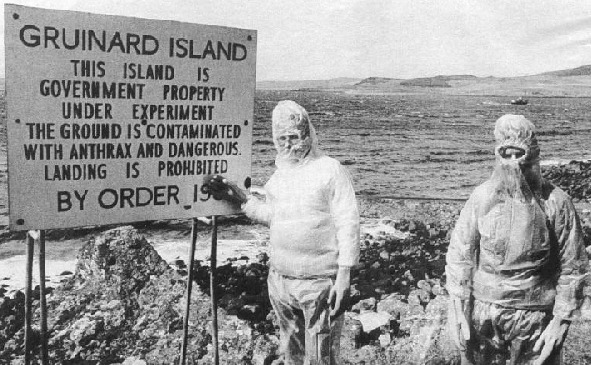
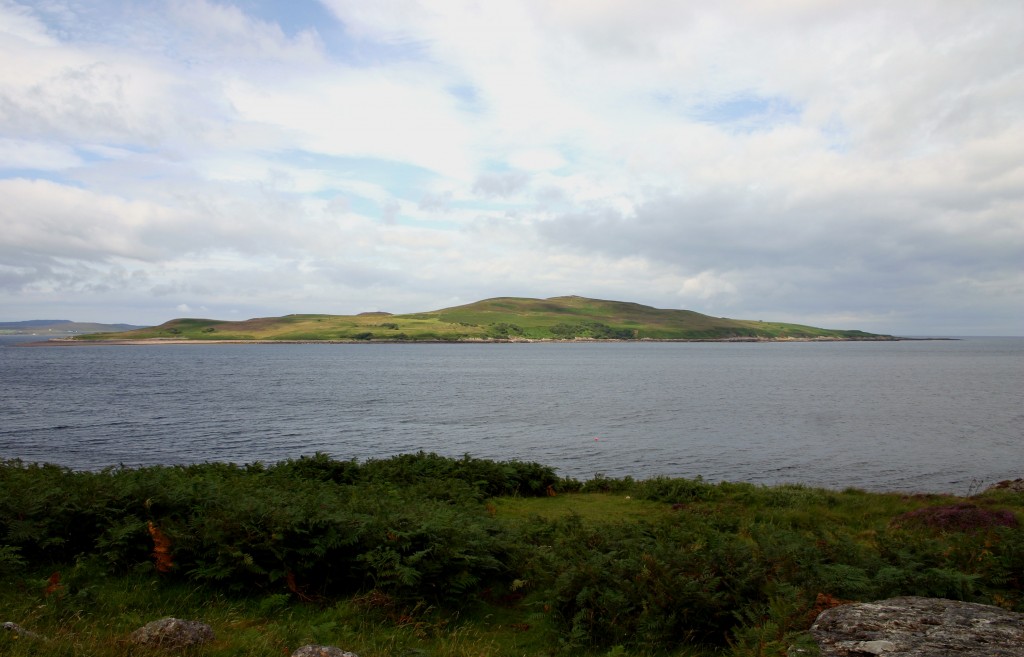
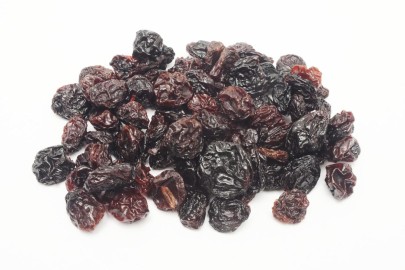
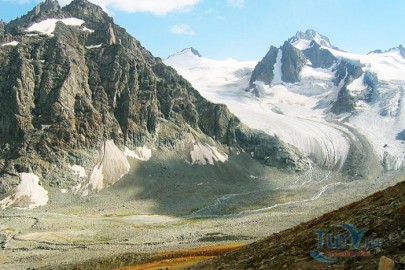
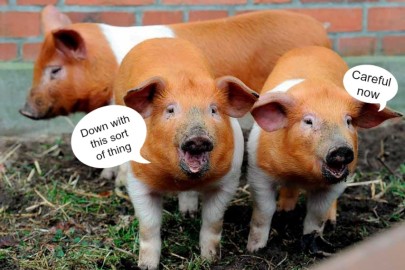







Fascinating.
I initially misread that as Grauniad Island and pictured Polly Toynbee, George Monbiot, Seamus Milne etc all stranded together… Pass the anthrax!
I believe that there is an island in the Potomac near Quantico, Virginia, say 20 miles downstream from Washington, DC, that is off limits owing to the residue of chemical or biological weapons testing.
Interesting area, between Poolewe and Dundonnell including the infamous isle and Aultbea, all secret squirrel and MOD regulation buildings, this is where the Atlantic convoys gathered, prior to being sunk, as the UBoats hovered around. On Skye’s loch Brittle the sound of Germans talking drifted across the water as the submarines lay on the surface, charging up and stuff. First came across Gruinard in 1957 as we went on a voyage of discovery that has lasted over 50 years. Last had a glimpse of Gruinard bay from the summit of An Teallach (the forge) on an icy new years morn 5 years ago. The last activity we saw on the island was in the late eighties, showing off the west coast to a Virginian, men in white coveralls loading bags onto a ship.
The area includes the tiny village of Melon Udrigle which has one of the most stunningly magnificent beaches, now ruined by a ghastly caravan site.
Large chunks of the area belong to a small number of people, Tim Rice owned most of the Dundonnell peninsula, (the far horizon in the B&W picture in the post,) although (ahh, ain’t that nice,) he did flog some back to the locals. The Whitbreds owned a palatial joint on the north shore of loch Maree only assessable by boat, could be seen on Scotland’s last unspoilt wilderness walk, Poolewe to Dundonnell via the Shenavall bothy, unspoilt that is until some tosser wrote an article, now the destination of many a North Face clad townie in charge of a set of car keys.